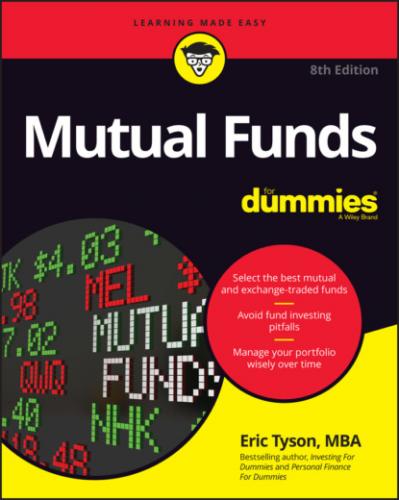Granted, your goals and needs will change over time, so these determinations don’t have to be carved in stone. But unless you have a general idea of what you’re going to do with the savings down the road and in what time frame, you won’t really be able to thoughtfully choose suitable funds. Common financial goals include saving for retirement, a home purchase, an emergency reserve, and so on. In the second half of this chapter, I talk more about the goals funds can help you to accomplish.
Another benefit of pondering your goals is that you better understand how much risk you need to take to accomplish your goals. Seeing the amount you need to save to achieve your dreams may encourage you to invest in more growth-oriented funds. Conversely, if you find that your nest egg is substantial given what your aspirations are, you may scale back on the riskiness of your fund investments.
Determine how much you’re saving
Many folks don’t know what their savings rate is. By savings rate, I mean, over a calendar year, how did your spending compare with your income? For example, if you earned $60,000 last year, and $57,000 of it got spent on taxes, food, clothing, rent, insurance, and other fun things, you saved $3,000. Your savings rate then would be 5 percent ($3,000 of savings divided by your gross (pre-tax) income of $60,000).
If you already know your rate is low, nonexistent, or negative, you can safely skip this step because you also already know you need to save more. But figuring out your savings rate can be a real eye-opener.
Examine your spending and income
To save more, you must reduce your spending, increase your income, or both. This isn’t rocket science, but it’s easier said than done.
Earning more income may help you save more to invest if you can get a higher-paying job or increase the number of hours you’re willing to work. Watch out, though: Many people’s spending has a nasty habit of soaking up increases in income. If you’re already working many hours, tightening the belt on your spending is likely better for your emotional and social well-being.
Maximize tax-deferred retirement account savings
Saving money is difficult for most people. Don’t make a tough job impossible by forsaking the terrific tax benefits that come from investing through retirement savings accounts. Employer-based 401(k) and 403(b) retirement plans offer substantial tax benefits. Contributions into these plans are generally federal- and state-tax-deductible. And after the money is invested inside these plans, the growth on your contributions is tax-sheltered as well. Furthermore, some employers will match a portion of your contributions.
PRIORITIZING YOUR FINANCIAL GOALS
Only you know what’s really most important to you and how to prioritize your goals. And prioritize you must — because your desires probably outstrip your ability to save and accomplish your goals. Now that doesn’t mean that you can’t fulfill your objectives and dreams. With an average income, you can, with proper planning, achieve most of the financial goals identified throughout this chapter. But you do have to be realistic about how many balls you can juggle at any one time.
That may mean, for example, that you have to reduce your retirement plan contributions while you save for a down payment on a home. Or that you have to downscale the size of your dream house a bit if you really want Junior to attend a pricey, private college.
Again, you’re the best person to decide what trade-offs to make. However, because of the tax breaks that come with retirement account contributions, retirement funding should always be near the top of your priority list. Remember: Making retirement account contributions reduces your tax bill, effectively giving you more dollars with which to accomplish your various goals.
And, as suggested by its name, your emergency reserve fund should always be a top priority, especially if your income is unstable and/or you have no family to fall back on. On the other hand, if you have a steady job and at least a few solvent family members, you can probably afford to build up this fund more slowly and in conjunction with other savings goals.
Determine your tax bracket
When you’re investing in mutual funds outside of tax-sheltered retirement accounts, the profits and distributions that your funds produce are subject to taxation. So the type of fund that makes sense for you depends, at least partially, on your tax situation.
Please see Chapter 10 for complete information on the taxation of investment returns, including recent tax law changes.
Assess the risk you’re comfortable with
Think back over your investing career. You may not be a star money manager, but you’ve already made some investing decisions. For instance, leaving your excess money in a bank savings or checking account is a decision — it may indicate that you fear volatile investments.
